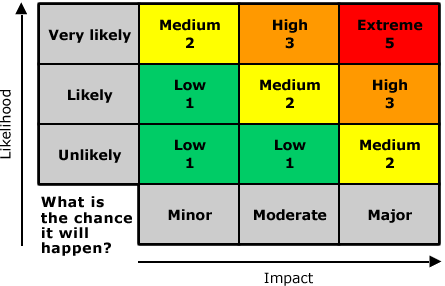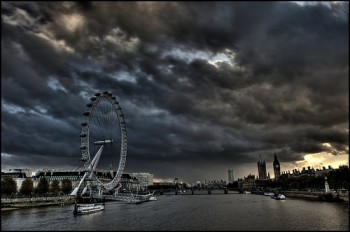 In the midst of the still pending American government shutdown, our MBA course on Managerial and Financial Accounting conducted a case study assignment looking at a small Canadian boutique jewelry firm and their expansion into the American market. A key issue to address was the assumptions our answers were based on. With the explicit identification of assumptions was also the classification of risks associated with each of the two proposed business expansion scenarios for the jewelry firm. To generate the likely risks the company faced under each expansion scenario we brainstormed risks, read industry and small business risk profiles, and applied basic risk models.
In the midst of the still pending American government shutdown, our MBA course on Managerial and Financial Accounting conducted a case study assignment looking at a small Canadian boutique jewelry firm and their expansion into the American market. A key issue to address was the assumptions our answers were based on. With the explicit identification of assumptions was also the classification of risks associated with each of the two proposed business expansion scenarios for the jewelry firm. To generate the likely risks the company faced under each expansion scenario we brainstormed risks, read industry and small business risk profiles, and applied basic risk models.
 Having identified risks, we then had to decide how likely each was, and what the severity if the scenario came to pass. As I’ve found repeatedly throughout my interactions with my colleagues in the program, someone inevitably has directly applicable knowledge and experience. In this case, Anindya Chowdhury spoke to his experience working for UBS Wealth Management. His suggestion was to do what he did at UBS—which we quickly adopted—to categorizing risks into one of three types (low, medium, high) for both risk severity and likelihood. Risks both high in severity and likelihood have to be understood and then managed. A highly likely and highly severe risk—to keep things simple—is a bad situation. A very severe but highly unlikely situation, for example, would be the SeaBus sinking; the bulk of its entire operation is premised around avoiding this very severe but unlikely risk. Our case attempted to apply a risk management model; hopefully we did it well.
Having identified risks, we then had to decide how likely each was, and what the severity if the scenario came to pass. As I’ve found repeatedly throughout my interactions with my colleagues in the program, someone inevitably has directly applicable knowledge and experience. In this case, Anindya Chowdhury spoke to his experience working for UBS Wealth Management. His suggestion was to do what he did at UBS—which we quickly adopted—to categorizing risks into one of three types (low, medium, high) for both risk severity and likelihood. Risks both high in severity and likelihood have to be understood and then managed. A highly likely and highly severe risk—to keep things simple—is a bad situation. A very severe but highly unlikely situation, for example, would be the SeaBus sinking; the bulk of its entire operation is premised around avoiding this very severe but unlikely risk. Our case attempted to apply a risk management model; hopefully we did it well.
 The days following the end of Managerial and Financial Accounting saw the American government shutdown and rapidly approach a default. During this period a particular New York Times article caught my eye titled “Thinking the Unthinkable in the City of London.” Risk discussion appears throughout the article. Investors are “mindful of the tail risk [i.e., unlikely but severe] from the debt ceiling debate and possible default. Clearly those tail risks are substantial, but the reality of that actually happening is limited.” There is a sentiment that “the chance of an unresolved default of U.S. Treasuries is below 1 percent” one analyst said, but that “even with such a low percentage, the ramifications of unresolved default would be so serious that clearly we have to check everything.” This was nearly the exact type of discussion we’d had only a few days before looking at our case study. Naturally the risks to a boutique jewelry firm expansion are different than capital markets exposed to a US default. Yet the principle is the same; we too had asked what massively impactful events are very unlikely. Do we even worry about managing these? Probably not for a small jewelry firm do you concern yourself with severe and unlikely events, but you certainly would if your perspective was as a business tied to the health of the American financial markets last week.
The days following the end of Managerial and Financial Accounting saw the American government shutdown and rapidly approach a default. During this period a particular New York Times article caught my eye titled “Thinking the Unthinkable in the City of London.” Risk discussion appears throughout the article. Investors are “mindful of the tail risk [i.e., unlikely but severe] from the debt ceiling debate and possible default. Clearly those tail risks are substantial, but the reality of that actually happening is limited.” There is a sentiment that “the chance of an unresolved default of U.S. Treasuries is below 1 percent” one analyst said, but that “even with such a low percentage, the ramifications of unresolved default would be so serious that clearly we have to check everything.” This was nearly the exact type of discussion we’d had only a few days before looking at our case study. Naturally the risks to a boutique jewelry firm expansion are different than capital markets exposed to a US default. Yet the principle is the same; we too had asked what massively impactful events are very unlikely. Do we even worry about managing these? Probably not for a small jewelry firm do you concern yourself with severe and unlikely events, but you certainly would if your perspective was as a business tied to the health of the American financial markets last week.
Ryan Cross is a current MBA student at Beedie. He spent a number of years prior to starting his MBA conducting research and publishing on military intelligence tools, on UN peacekeeping operations, and the ethics of war. Ryan tweets at @ryanwcross can be contacted at rca34@sfu.ca.